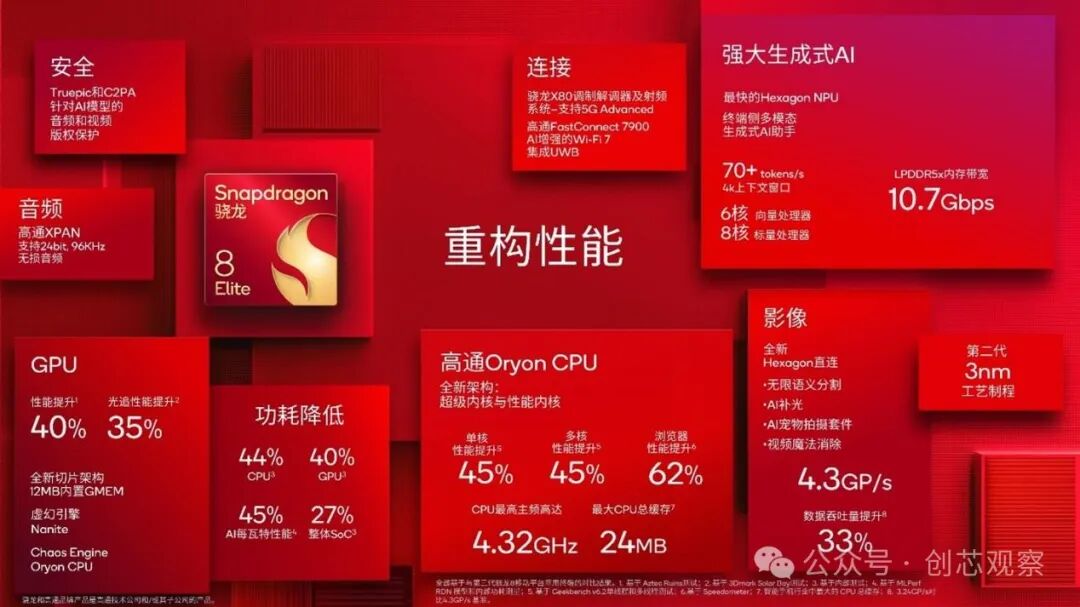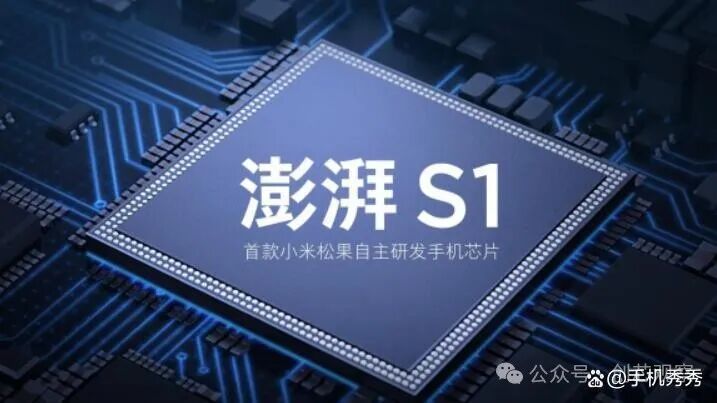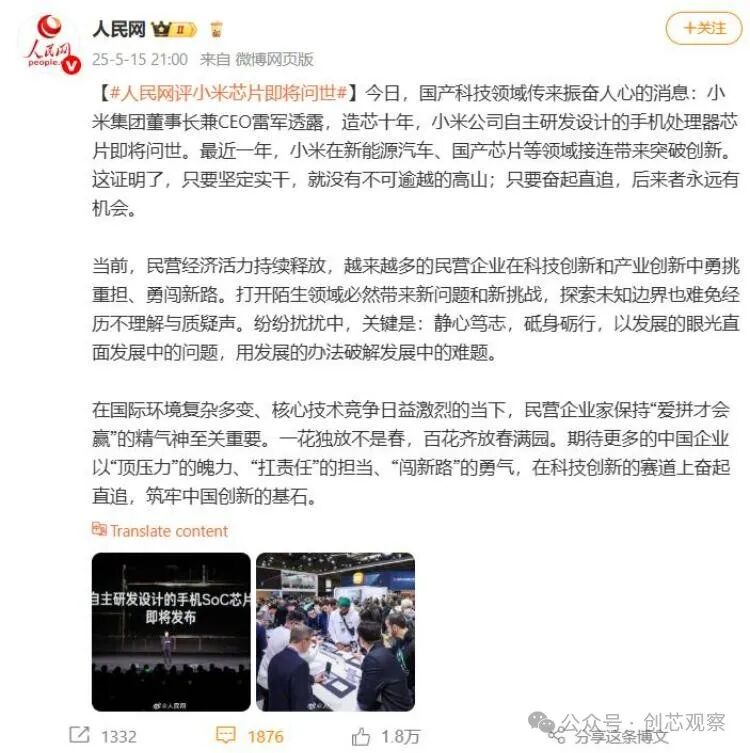Out of the blue, Lei Jun suddenly announced that Xiaomi’s long-awaited self-developed mobile SoC chip “Xuanjie O1” is coming!


Lei Jun also posted: “After ten years of hard work, the passion for chip development is still strong. Xiaomi has been on the path of chip development for over a decade. Everyone knows that making chips is difficult, but why is it even harder to develop mobile SoC chips? Let me explain in detail!

01
What is SoC?
First, what is SoC? Over 20 years ago, I discussed with colleagues about a new chip technology from abroad called SoC, or System on Chip, and how it should be translated. Essentially, when we create an electronic product, different functions require different chips to implement. SoC integrates these different functions into one chip, creating a small system. For example, functions that previously required five or ten chips can now be achieved with just one chip, which is a boon for chip users. Instead of reviewing the technical documentation for ten chips to see how to design and create a circuit board, now you only need to understand one chip, significantly reducing the workload.
Based on this principle, we later translated SoC as “System on Chip” or “System-Level Chip”.
02
What functions does SoC have?
Now, let’s take a look at what functions are integrated into mobile SoCs.
Xiaomi’s Xuanjie O1 has not yet disclosed specific performance metrics, so let’s take last year’s flagship mobile SoC chip released by Qualcomm as an example to discuss the main functions of this chip:
First and foremost, the core is the processor family! The CPU acts like the brain for calculations, while the GPU specializes in graphics rendering to ensure smooth gaming experiences. Now, there are also dedicated NPUs for handling AI tasks, such as scene recognition during photography.
Additionally, the storage system is crucial, such as the various levels of cache used for temporarily storing data. This works in conjunction with the processor to prevent the phone from lagging.
Moreover, the most important external communication functions are also integrated into the SoC, including 5G communication, Wi-Fi, and Bluetooth.
The power management unit: It can dynamically adjust the chip’s supply voltage and frequency, allowing for low-power operation and extending the phone’s battery life.
Other functional modules: Depending on application requirements, SoC chips may also include other functional modules, such as audio processors, imaging units, and security modules.


03
Why must mobile devices use SoC chips?
The main driving forces behind the continuous development of mobile phones are few: increasing performance, becoming lighter and thinner, and extending standby time, all of which align with the characteristics of SoC.
Compared to traditional multi-chip solutions, SoC offers significant advantages in performance, power consumption, and cost due to its highly integrated design:
1. Small size, space-saving
Integrating all core modules into a single chip greatly reduces the circuit board area. For example, phones can be made thinner and lighter while freeing up more space for batteries, cameras, and other components.
2. Low power consumption, improved battery life
With module integration, data transmission paths within the chip are shorter, reducing signal delay and energy loss. For instance, Apple’s A-series chips significantly reduce AI task power consumption through collaborative computing between the CPU, GPU, and NPU.
3. Stronger performance, efficient collaboration
The integrated design allows modules to share memory, buses, and other resources, optimizing computational power allocation through unified scheduling. For example, Huawei’s Kirin chip’s NPU collaborates with the ISP to achieve real-time video background blurring.
4. Lower costs, advantages in mass production
For a single chip, packaging and testing costs are much lower than for multi-chip combinations. This reduces overall hardware costs and simplifies development for mobile developers, speeding up the time to market for new phones.
SoC vs Traditional CPU: Essential Differences
|
Feature |
Traditional CPU |
SoC |
|---|---|---|
|
Function Range |
Only responsible for general computing tasks |
Integrates CPU + GPU + NPU + modem + ISP, etc. |
|
Application Scenarios |
Computers, servers, etc. |
Mobile phones, tablets, IoT devices, etc. |
|
Design Goals |
High performance, high versatility |
High integration, low power consumption, scenario customization |
|
Typical Cases |
Intel Core, AMD Ryzen |
Apple A17, Qualcomm Snapdragon 8 Gen 3 |
04
Challenges in SoC Development
Looking at these functions, it’s clear how difficult it is to develop SoCs, and many challenges cannot be solved by technology alone.
Creating a capable mobile chip is like dancing on the tip of a needle—technically challenging, financially demanding, and time-consuming. Here are some major issues:
First, the technical difficulty is high. It requires fitting various processors, modems, interfaces, and other modules into a chip the size of a fingernail, ensuring they not only fit but also work together without conflict, generate minimal heat, and perform optimally. The challenges are evident.
Moreover, to achieve low power consumption and strong performance with a competitive edge, the most advanced manufacturing processes must be used. Reports indicate that Apple spent up to $1 billion on the design and tape-out of its M3 series chips for desktop and tablet applications, which utilize TSMC’s latest 3nm process. Even more frustrating is that the most advanced production lines are often controlled by others, not available for just anyone to use.
The patent issues in mobile chip design are like an invisible war, directly determining the survival of manufacturers. A real case is the 5G patent battle between Apple and Qualcomm, where Apple ultimately conceded, paying at least $4.5 billion to Qualcomm and signing a six-year patent licensing agreement. This illustrates the destructive power of patents.
95% of mobile chips globally are based on ARM architecture, incurring hundreds of millions of dollars in patent fees annually.
Huawei has applied for over 200,000 patents, and in the past five years, over 2 billion phones have received Huawei’s 4G and 5G patent licenses. In 5G patent declarations, Huawei holds 14% of the global total, ranking first worldwide. In 2022, Huawei’s global patent licensing fees amounted to $1.2 billion.
05
A Review of Xiaomi’s Chip Development Journey
Xiaomi’s chip development journey can be divided into two phases. In 2014, Xiaomi established its chip brand “Pinecone” and initiated its chip development business. After nearly three years, Xiaomi released the Surge S1 mobile chip in 2017, which debuted in the Xiaomi 5C.
The Surge S1 was positioned as a mid-range mobile chip, utilizing TSMC’s 28nm process. However, at that time, this chip was considered relatively outdated in terms of process technology and had issues with insufficient modem capabilities, high power consumption, and heat generation, ultimately being used only in the Xiaomi 5C before fading away. According to rumors, the subsequent Surge S2 chip experienced five failed tape-outs, forcing Xiaomi to suspend its main chip development work.
Xiaomi then entered the second phase of chip development, shifting towards “small chips,” successively launching self-developed imaging chips in the Surge C series, charging chips in the Surge P series, and battery management chips in the Surge G series.
Lei Jun has stated that developing chips is the pinnacle of mobile technology, and Xiaomi must master this core technology to rank among the world’s top mobile manufacturers.

According to internal sources, the subsequent development of the Surge S2 chip faced five failed tape-outs, and due to the high barriers to 5G modem development, Xiaomi ultimately suspended its mobile SoC project and shifted to developing peripheral chips such as Bluetooth and RF.
According to public information, Xiaomi successfully completed the tape-out of China’s first 3nm mobile system-level chip in 2024. Tape-out is a critical step in chip development, indicating that Xiaomi has completed the entire process from design to sample testing, and the announced Xuanjie O1 is likely this 3nm process chip.
Currently, Xiaomi has not disclosed detailed specifications for the Xuanjie O1, but based on various leaks, its CPU may adopt a “1+3+4” octa-core design, with performance comparable to Snapdragon 8 Gen 1, which is a relatively mature and reliable solution.
People’s Daily highly praised the significance of Xiaomi’s self-developed chips, stating, “In the past year, Xiaomi has made breakthroughs in the fields of new energy vehicles and domestic chips. This proves that as long as we are determined and practical, there are no insurmountable mountains; as long as we strive to catch up, there is always an opportunity for latecomers.”
